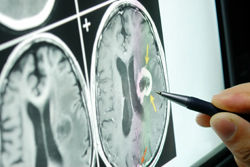3D chemically-sensitive imaging - Synergy of 2 imaging modes
Sophisticated imaging technology is very important in the medical setting to diagnose disease as well as support drug delivery. Two important existing imaging techniques, optical coherence tomography (OCT) and coherent anti-Stokes Raman spectroscopy (CARS), can be advanced further to improve current imaging capabilities. This was the aim of the EU-funded project 'Three-dimensional clinical coherent chemically-sensitive imaging' (3D3CSI). Generally, CARS has been used for non-invasive imaging of lipids in patients or laboratory tests, while OCT has been exploited to create three-dimensional (3D) images in ophthalmology and cardiology. The project team worked on creating multimodal 3D chemically sensitive imaging technology by combining state-of-the-art ultrahigh axial resolution OCT with CARS sensitivity. Although OCT offers extremely high sensitivity and speed, it cannot easily distinguish different chemical substances. CARS, on the other hand, is capable of extracting specific biochemical information, but technical challenges of integration with OCT technology were high. However, new developments in CARS could facilitate using ultrabroad lasers also utilised in ultrahigh axial resolution OCT. In this context, the project team envisioned a cost-effective, compact and simple medical instrument. This device would be capable of simultaneously recording morphological and depth-related information at cellular level in a clinical environment. This unprecedented non-invasive detection of metabolic and tissue information would radically improve researchers' understanding of physiologic and pathologic processes in their native 3D environment. The team was successful in combining these two technologies, enabling the extraction of full chemical and morphological information from unknown structures within complex samples. They customised a titanium-sapphire laser for use in both CARS and OCT technologies thus bringing this next generation imaging technology into the medical sphere. Successful commercialisation for clinical application of this technology is expected to improve diagnosis and treatment for a number of diseases.







